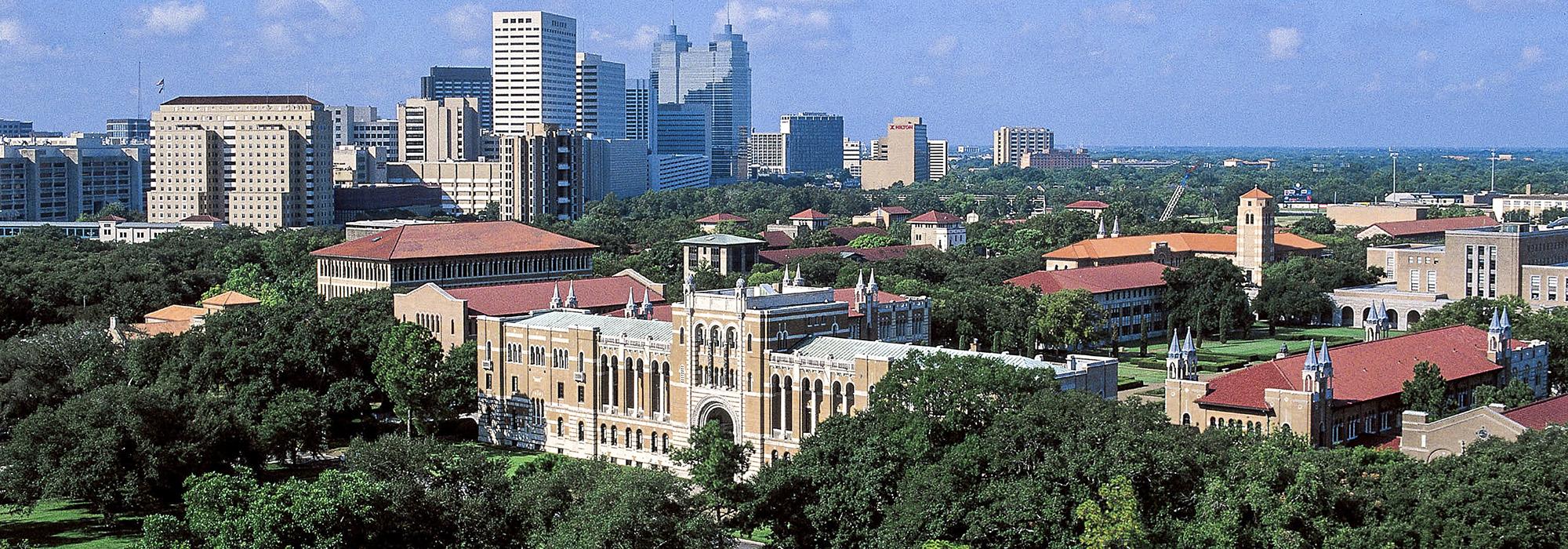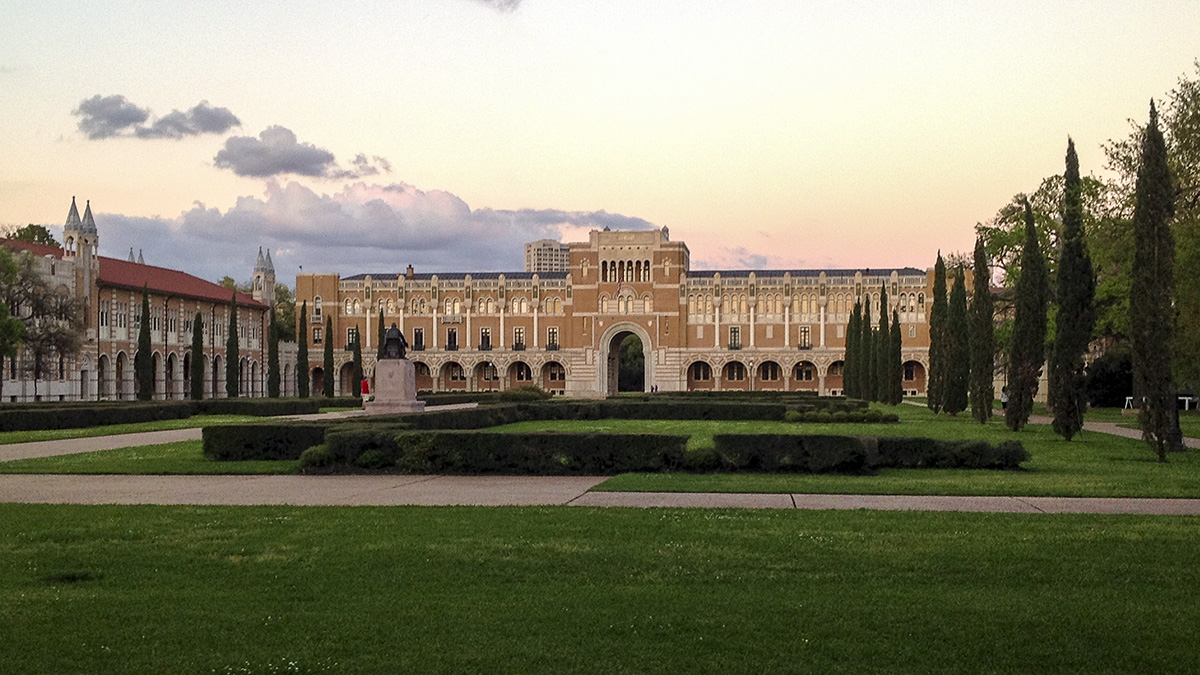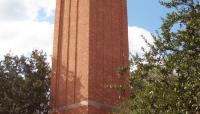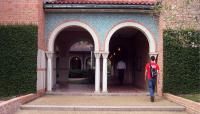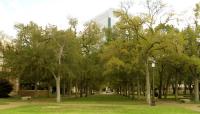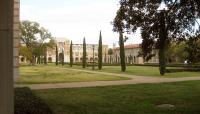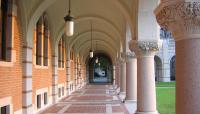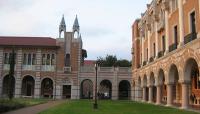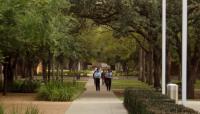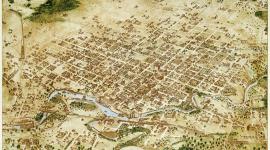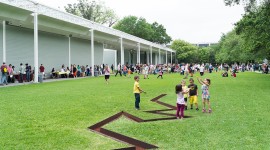Landscape Information
In 1891 Texas real-estate developer William Marsh Rice dedicated his fortune to establishing a modern and secular institute of higher education. Rice Institute was chartered in 1907 and opened to students in 1912.
Led by college president Edgar Odell Lovett, Rice was modeled after British residential colleges. The campus was laid out on a triangular parcel comprising 277 acres of flat coastal plain, with a master plan conceived by Ralph Adams Cram. Cram’s Beaux-Arts-inspired General Plan from 1910 offered a series of formalized quadrangles centered upon a primary east-west spine, flanked by parallel secondary axes and cross-axes. The main quad, Academic Court, was approached by an extended entrance drive planted with live oaks and Formosa azaleas. The Academic Court was planted with privet hedge parterres and Italian cypresses and edged on three sides by live oaks. The entire grounds followed suit, planted with privet hedges and trees in orderly rows, while buildings were constructed in a neo-Byzantine style, using the same striated brick and marble and featuring arcades that provided covered passages.
Following World War II the campus moved to a more automobile-focused model. The Cram plan was intentionally disrupted with the placement of Fondren Library in the middle of the central spine, physically closing Academic Court. From 1957 to 1960, landscape architect Robert White introduced a varied planting plan with trees placed informally, eschewing rows.
As the campus expanded in the late 20th century, modern architectural styles and decentralized building clusters were implemented. Today the campus comprises 285 thickly-treed acres.



